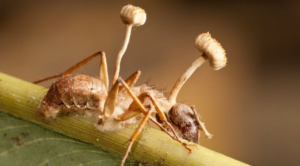When it comes to cinema, there are few tropes as predictable as a zombie flick. You can usually guess the plot before the previews are over: our protagonist begins to think the neighbor is acting a bit strange before realizing the whole neighborhood is teeming with blood-thirsty zombies. A few scenes later, cities are burning and society has descended into an every-man-for-himself combat zone. Rabid, dead-eyed automatons looking for their next bite of flesh stalk the land, infested with some kind of fantastical, incurable virus.
But HBO’s The Last of Us, based on a video game of the same name, breaks the mold—at least in an epidemiological sense. Instead of a fictional pathogen, the show’s zombies are infected with a parasitic fungus that actually exists in nature. It’s called cordyceps, and it really can hijack the brains and bodies of insects, turning them into real-life zombies.
So, is it coming for us next?
The Vinyl Comeback Continues (infographic)
The Zombie-Ant Fungus
The most famous parasitic fungi—and the inspiration for The Last of Us, according to the game and series creator Neal Druckmann—is Ophiocordyceps unilateralis, commonly known as the “zombie-ant fungus.” It lives in the tropical forests of Australia, Brazil, and Thailand, and reproduces by commandeering the bodies of unsuspecting carpenter ants feeding on the forest floor.
Read more: Popular Mechanics
Ask me anything
Explore related questions





